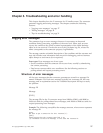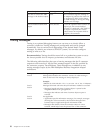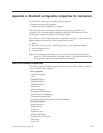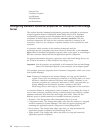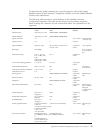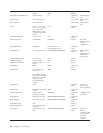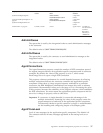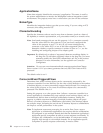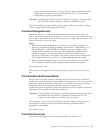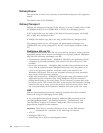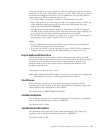
Listener Port
Certificate Location
LogFileName
TraceFileName
jms.BrokerName
Configuring standard connector properties for WebSphere InterChange
Server
This section describes standard configuration properties applicable to connectors
whose integration broker is WebSphere InterChange Server (ICS). Standard
configuration properties provide information that is used by a configurable
component of InterChange Server called the connector controller. Like the
connector framework, the code for the connector controller is common to all
connectors. However, you configure a separate instance of the controller for each
connector.
A connector, which consists of the connector framework and the
application-specific component, has been referred to historically as the connector
agent. When a standard configuration property refers to the agent, it is referring to
both the connector framework and the application-specific component.
For general information about how connectors work with InterChange Server, see
the Technical Introduction to IBM WebSphere InterChange Server.
Important: Not all properties are applicable to all connectors that use InterChange
Server. For information specific to an connector, see its adapter guide.
You configure connector properties from Connector Configurator, which you access
from System Manager.
Note: Connector Configurator and System Manager run only on the Windows
system. Even if you are running the connector on a UNIX system, you must
still have a Windows machine with these tools installed. Therefore, to set
connector properties for a connector that runs on UNIX, you must start up
System Manager on the Windows machine, connect to the UNIX
InterChange Server, and bring up Connector Configurator for the connector.
A connector obtains its configuration values at startup. If you change the value of
one or more connector properties during a runtime session, the property’s update
semantics determine how and when the change takes effect. There are four
different types of update semantics for standard connector properties:
v Dynamic—The change takes effect immediately after it is saved.
v Component restart—The change takes effect only after the connector is stopped
and then restarted in System Manager. This does not require stopping and
restarting the application-specific component or InterChange Server.
v Server restart—The change takes effect only after you stop and restart the
application-specific component and InterChange Server.
v Agent restart—The change takes effect only after you stop and restart the
application-specific component.
34 Adapter for i2 User Guide




